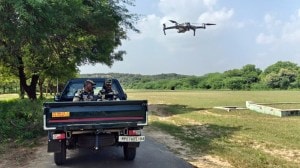Forests equal to the size of India burnt annually: Study
A geographer from the University of Leicester has come up with this startling fact using data received from satellites.

A geographer from the University of Leicester has for the first time mapped the area of vegetation burnt annually on earth since 2000, concluding that vegetation larger than the size of India is lost to fire each year.
The map of the scorched Earth, created by Kevin Tansey and his team, which contains the details of the fire scars on the planet between 2000 and 2007, reveals that between 3.5 and 4.5 million square km of vegetation burns on an annual basis.
This is an area equivalent to the European Union and larger than the size of India. The information is considered vital for scientists and agencies involved in monitoring global warming, measuring and understanding pollutants in the atmosphere, managing forests and controlling fire and even for predicting future fire occurrence.
The research has been published in the journal Geophysical Research Letters.
Prior to this, data was only available for the year 2000. “We have produced, for the first time, a global data base and map of the occurrence of fire scars covering the period 2000-2007,” Tansey, a Lecturer in Remote Sensing at the Department of Geography, said.
Though it was not possible to determine if there is an increasing trend in the occurrence of fire with seven years of data, but year-to-year differences of the order of 20 per cent, have been noticed, he said.
“This unique data set is in much demand by a large community of scientists interested in climate change, vegetation monitoring, atmospheric chemistry and carbon storage and flows,” Tansey said.
The team used the VEGETATION instrument onboard the SPOT European satellite, which collects reflected solar energy from the Earth’s surface, providing global coverage on almost a daily basis.
“When vegetation burns, the amount of reflected energy is altered, long enough for us to make an observation of the fire scar. Supercomputers located in Belgium were used to process the vast amounts of satellite data used in the project”, he added.
The team discovered that the majority of fires occur in Africa. Large swathes of savannah grasslands are cleared every year, up to seven times burnt in the period 2000-2007.
Photos





- 01
- 02
- 03
- 04
- 05


























